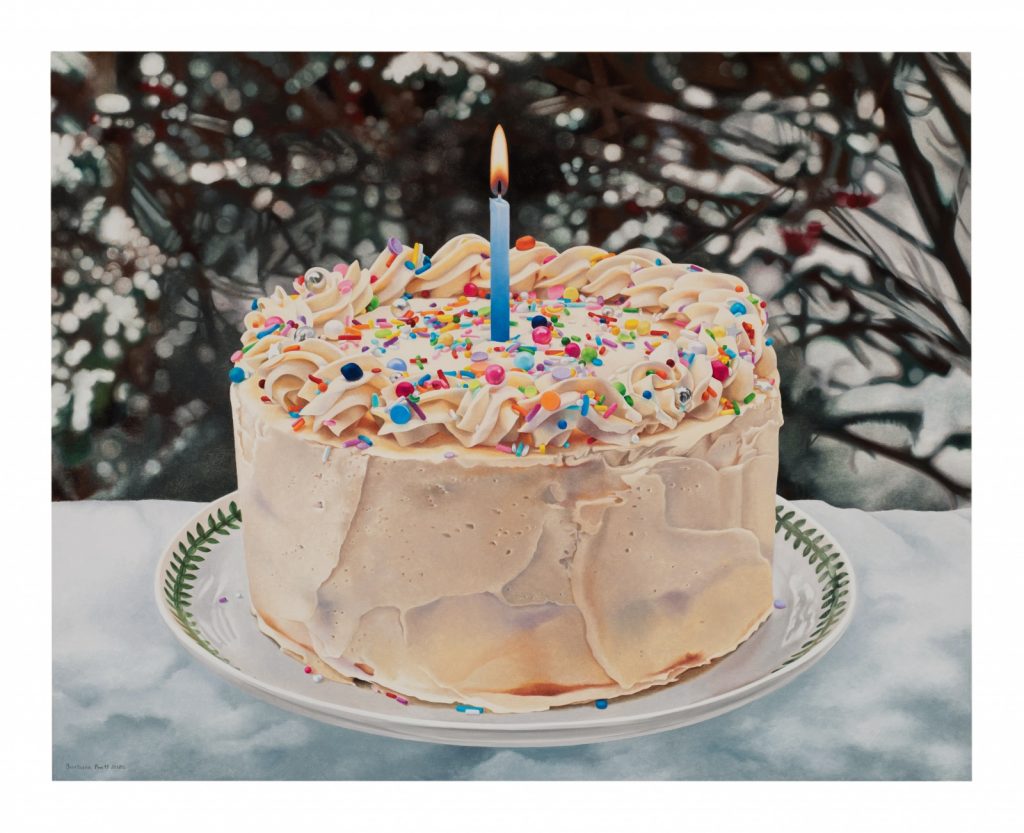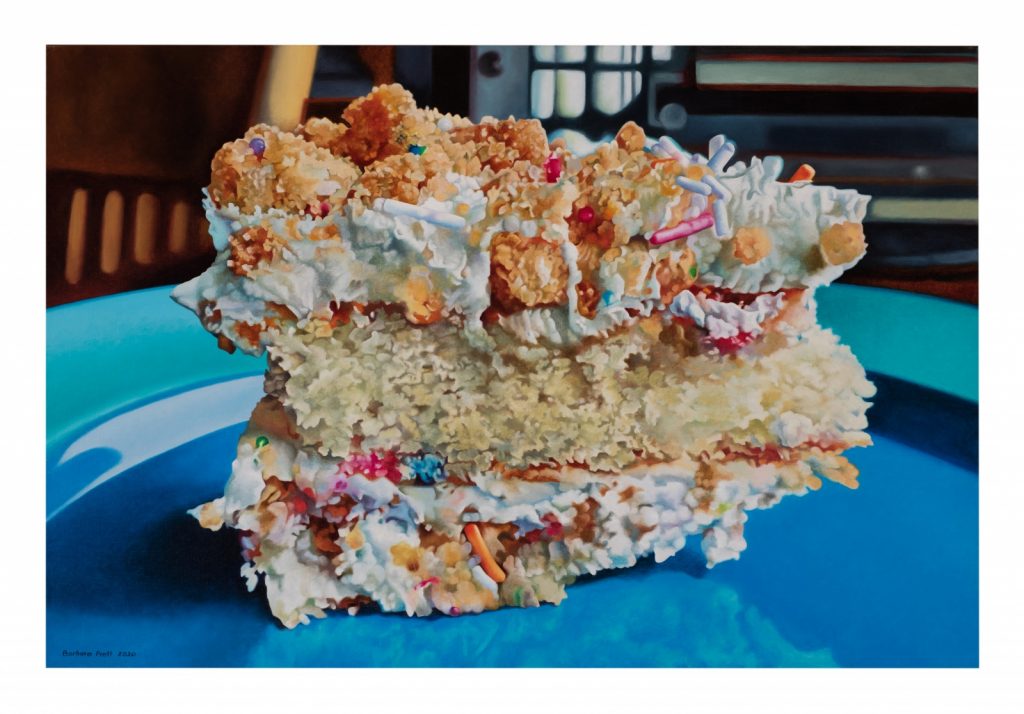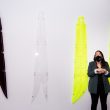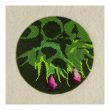By Jane Walker

In September 2020, painter Barbara Pratt debuted her latest body of work, Cake, at Emma Butler Gallery in St. John’s. An homage to her late mother, Mary Pratt, Pratt’s new paintings cut deep during a year filled with anxious baking and every kind of grief.
Over the past year we all mourned. We lost loved ones, colleagues, friends, and friends-of-friends. We traded shared meals and body heat for isolation, in faith that this would eventually pass, that we would gather again soon. And despite there being no guests to entertain, the grocery store shelves were soon cleared of flour, sugar, yeast, and eggs.
Something that struck me right away about Pratt’s collection was the motif of the singular in response to gathering and celebration. Single servings, mostly cupcakes, speak to the experience of the individual during life and loss; even the few paintings depicting full-size cakes bear a single candle. One cake rests candleless and is covered in flowing plastic, isolated in its own right. And while it could be overlooked by viewing each piece individually, a pandemic lens is starkly present throughout the collection.
In Pratt’s statement about the exhibition, she wrote: “In 2018 my mother died. In 2019, when I turned 56, I realized that, for the first time, there would be no cake. It was a hard day. It made me realize that baking a cake was, for my mother, an act of love. Thinking about it, I realized, too, that it’s the same for me.”

My grandmother died in mid-December. The following day, I walked down the path to my grandfather’s house with my mom’s lemon pound cake in hand, dusted perfectly with icingsugar. It slid around the plastic platter as I carried it, lined with a paper doily, wrapped up with cellophane, and pulled together with a burgundy bow. I thought of Pratt’s cake paintings and my looming deadline, and I asked myself how I could possibly write about cake and grief right now.
Sweeping memories flooded me with images of sweets that my grandmother used to make: perfect apple pies, glazed chocolate cake that wasn’t too sweet, and, when she was especially busy, angel food cake from the grocery store, with fresh strawberries and cream. I once read that food memories are among the strongest and most accurate human memories, arguably because they are lived and recorded with all of our senses. In some ways, it’s been an impossible task to be inundated with sensory memories while trying to write an exhibition review; in other ways, it’s been a gift.
I’m not much of a baker myself. Still, while my own concoctions vary drastically in quality—and are few and far between—there has never been a shortage of baked goods in my life. In the days leading up to my grandmother’s funeral, my brother shared his memories of the many Costco trips he would take with her whenever butter was on sale. (Without fail, she spent her savings on hotdogs and Pepsi on the way out.) My grandfather chimed in that she would hide her sweets from him in case company came by, having once forgotten a pie in the cupboard until it turned green. Baking, for my grandmother, was nourishment beyond sustenance, as it is for many. It is simultaneously perishable and non-perishable, an I love you and a You are welcome here.
In Mireille Eagan’s essay “Look, Here,” in the publication accompanying Mary Pratt’s 2013 retrospective, she describes Pratt’s work as “episodic, disjunctive, not grounded in particular narratives but rather alluding to them.” She claims that Pratt’s art gives form to “the rich and complex feelings that hover over the mundane.” Like her mother was known to do, Barbara Pratt injects her viewer with a moment as if it were their own—a single cupcake laid on an old radiator (perhaps there’s not enough room at the table); a fully-dressed cake waiting to travel to its final destination; a slice freshly plopped into grandmother’s good bone china, the clink of the spoon as it hits the inside wall, slightly muffled by buttercream. Cake narrates a lifetime of birthdays, afternoon tea, and time spent caring. From the snapshot we see in the painting “Prepared Pans,” a moment acknowledging an absence and yet preparing for a fullness, to a curious image of a cupcake being torched on a square white plinth, many of the paintings are ready to eat, a single serving anticipating the first bite. Like her mother’s paintings, Barbara’s work is honest, specific, and autobiographical. It is her life, her family, her grief, and her joy. But it’s also yours, and mine.
















Leave a Reply